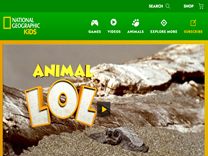A blob the size of a teacup slinks along the ocean floor in the shallow waters off of Australia. It’s a type of sea slug called the nudibranch (NEW-dih-bronk), a slime-oozing creature with a boneless body. Many of them also sport brilliant colors and eye-catching patterns on their skin. In fact this sticky slug is often considered one of the most beautiful animals in the world. IN THE MOOD FOR FOOD Over 3,000 species of nudibranchs exist, and most live in shallow, tropical waters. They can be anywhere from a quarter of an inch to 12 inches long and can weigh up to 3.3 pounds. These sea slugs spend their time sliding on their bellies around their habitat in search of snacks. The animals have a set of curved teeth, which they use to eat coral, sponges, and fish eggs off the ocean floor. Nudibranchs use tentacles on their heads to poke around for grub. TRUE COLORS The nudibranch’s meals don’t just satisfy its hunger—the food also gives the animal its coloring. When the sea slug eats, it absorbs and displays its prey’s pigment—the substance that gives the prey its color. Some nudibranchs also absorb toxins from certain prey and secrete the poison from their own skin. This allows them to fend off enemies such as fish. So the nudibranch is stunning, resourceful, and it recycles? This slug sounds far from sluggish! Text by Andrea Silen / NGS Staff
All rights reserved

